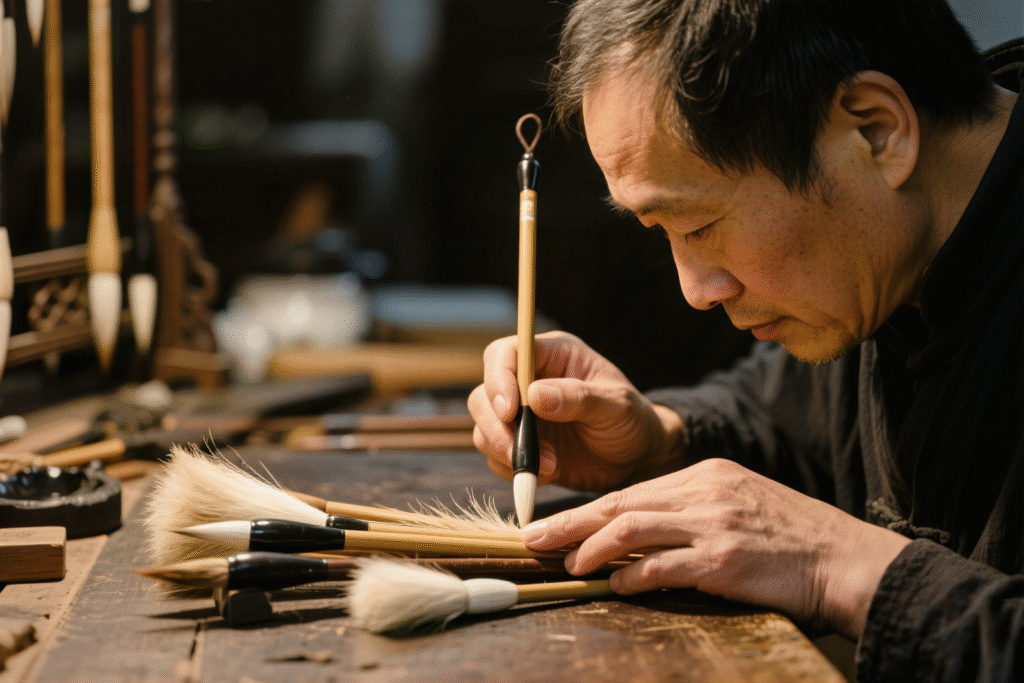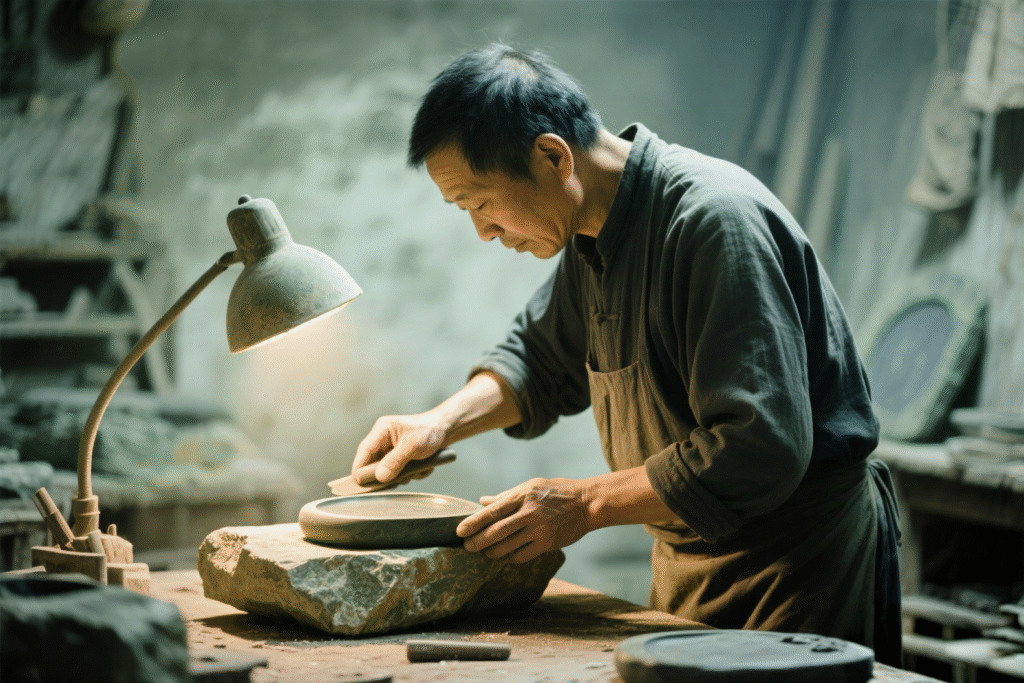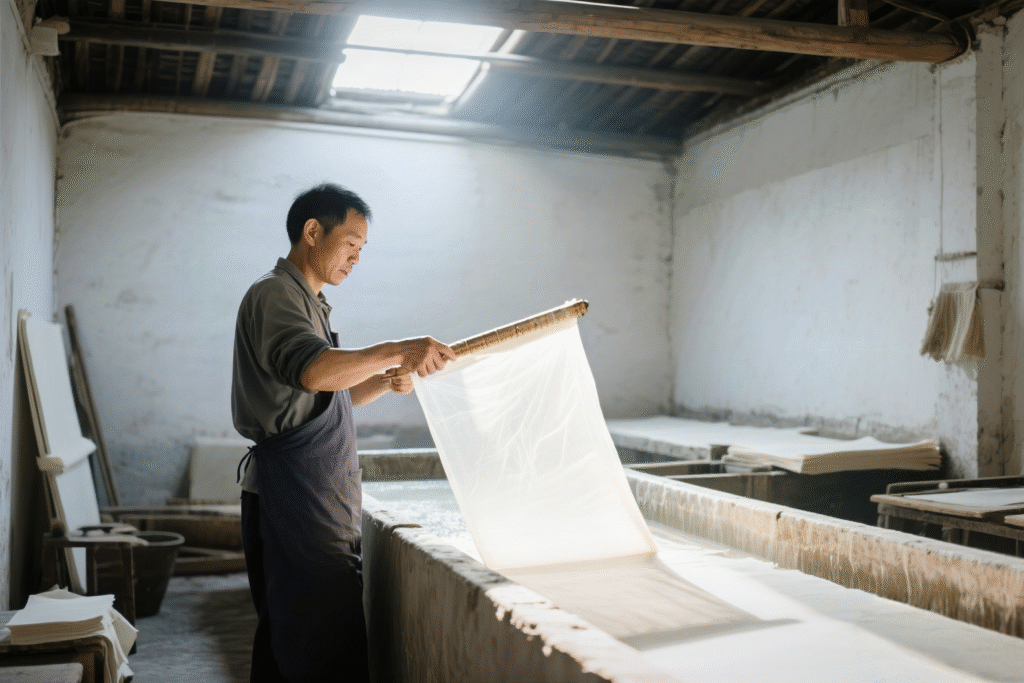Brush, Ink, Paper, Inkstone:
The Soul of Chinese Script

At Hu Kaiwen Ink Studio in Huizhou, artisans thud mallets into inky paste, releasing the earthy scent of pine-soot ink. In Xuancheng, workers lift gossamer sheets of Xuan paper—thin as cicada wings, strong as silk. Huzhou’s brush masters align wolf and goat hairs into precision tips, while Zhaoqing’s craftsmen polish Duan inkstones, seeking the silkiest ink pool.
These four—brush, ink, paper, inkstone—are China’s Four Treasures of the Study, vessels of civilization.
More than tools, they embody Chinese artistic spirit:
- Huzhou brushes: Sharp, rounded, balanced, resilient—dancing with control.
- Huizhou inksticks: Jet-black, luminous, enduring for centuries.
- Xuan paper: Absorbs ink richly, reveals layered washes, bears an “enduring legacy” (纸寿千年).
- Duan inkstones: Grind ink smooth as oil, gentle on brush tips.Each masterpiece embodies devotion to traditional craft.

From Wang Xizhi’s Lantingji Xu to Qi Baishi’s shrimp paintings—China’s artistic zeniths rest on these treasures’ synergy.
Profound Serenity Of Eastern Art

In the digital age, their allure deepens. Grinding a handmade pine-soot inkstick (手作松烟墨锭) on an antique-pit Duan inkstone, spreading raw-skin Xuan paper (净皮生宣书画纸), wielding a premium wolf-hair brush (极品狼毫书法笔)—this ritual is meditation. Practicing calligraphy, painting ink landscapes, transcribing sutras: all demand the Four Treasures. They anchor the scholar’s studio, bridge past and present, and channel the profound serenity of Eastern art (书写灵魂) through ink and motion.